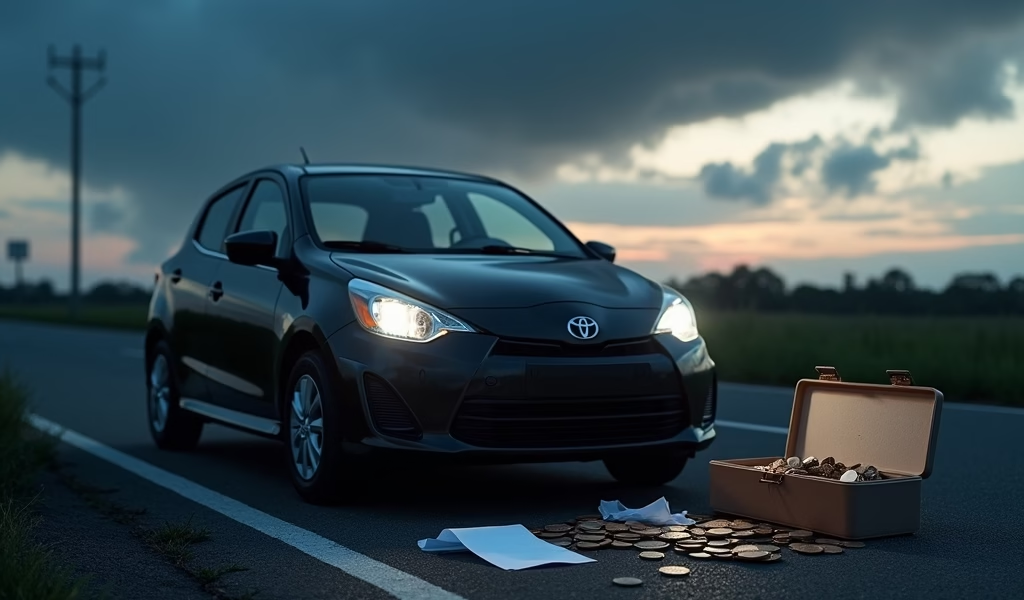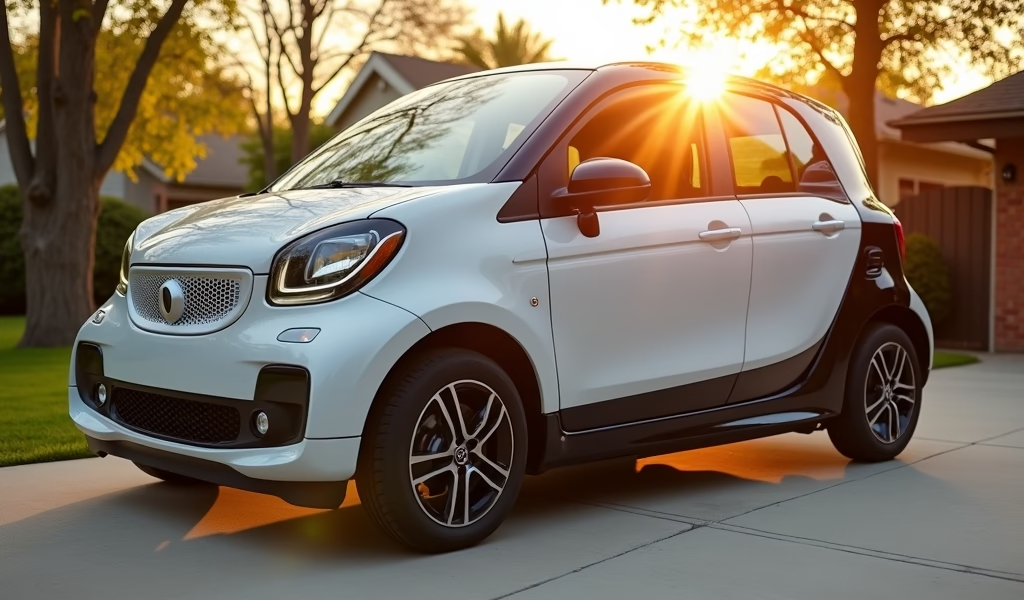Overview
New drivers face insurance rates that are 2-5 times higher than experienced drivers due to statistical risk factors, with premiums ranging from $3,000-$7,000 annually for teens and $1,800-$3,000 for new adult drivers. These rates can be reduced through strategies like completing driver education courses, maintaining good grades, joining family policies, choosing practical vehicles, and developing safe driving habits, with significant rate decreases typically occurring at ages 21 and 25.
Table of Contents
- Sticker Shock Street: Why New Drivers Pay Premium Prices
- Dollars and Driving: What New Drivers Actually Pay
- Factors Affecting Fees: What Drives Your Rate Sky-High
- Penny-Pinching Policies: Saving Strategies for New Drivers
- Coverage Crossroads: Choosing the Right Protection
- Time Transforms Tariffs: How Rates Decrease With Experience
- Final Thoughts: Navigating the New Driver Insurance Maze
- Frequently Asked Questions
Sticker Shock Street: Why New Drivers Pay Premium Prices
Ah, the sweet freedom of a fresh driver’s license – that plastic card opens doors to independence, but it also unlocks something less delightful: sky-high insurance rates. If you’re wondering how much is insurance for a new driver, brace yourself for what I call the “novice tax.” The road to driving freedom comes paved with premium payments that might make your wallet wince.
Insurance isn’t just playing hard to get with newcomers – there’s solid statistical reasoning behind those hefty fees. Fresh-faced drivers dance with danger more frequently than their seasoned counterparts. According to the Centers for Disease Control and Prevention, teen drivers are nearly three times more likely to be in a fatal crash than drivers aged 20 and above. Insurance companies don’t set rates based on hunches – they follow the cold, hard crash data.
Think of insurance companies as professional risk assessors with calculators instead of crystal balls. Without a driving history to review, you’re essentially a blank slate – and in the insurance world, blank slates get charged more until they prove themselves reliable. It’s not personal; it’s statistical.
Dollars and Driving: What New Drivers Actually Pay

Let’s talk turkey about the terrifying totals that tenderfoot travelers typically tackle. New drivers don’t just pay a little more – they pay a lot more. The figures fluctuate wildly depending on various factors, but I’ll give you the ballpark numbers that make many new drivers balk.
For teenage drivers, prepare for premium pandemonium. Most teens securing their own policies face annual fees between $3,000 and $7,000 – sometimes even higher in urban areas or states with higher insurance baselines. That’s roughly $250-$580 per month just to stay legal on the road! No wonder car insurance for teens causes so many family financial discussions.
Adults getting their first license fare somewhat better but still face the freshman fee. New adult drivers typically pay 20-40% more than experienced drivers of the same age, with annual premiums often ranging from $1,800 to $3,000. The insurance industry rewards experience, and when you lack it, you pay for it – plain and simple.
For comparison’s sake, experienced drivers with clean records might pay anywhere from $1,000 to $1,800 annually, depending on location, vehicle, and other factors. The difference is stark – like comparing the cost of a designer handbag to a grocery store tote. Both hold your stuff, but one costs significantly more than the other.
Factors Affecting Fees: What Drives Your Rate Sky-High
Your premium isn’t plucked from thin air – it’s calculated using a complex cocktail of considerations that insurers shake up to determine your rate. Understanding these factors helps demystify why that quote made you gasp.
Age amplifies everything in insurance equations. While all new drivers face higher rates, teenage new drivers face the steepest climb. Insurance companies see sixteen-year-olds as financial flamethrowers – likely to burn through money with accidents and claims. Each birthday brings slight relief, with significant drops typically occurring at 21, 25, and 30 years old.
Your vehicle choice can either help or hinder your premium pursuit. That flashy sports car might make your heart race, but it’ll make your insurance rate race even faster. High-performance vehicles, expensive repair costs, and theft-attractive models all push premiums higher than Mount Everest. Meanwhile, sensible sedans with stellar safety ratings help keep costs contained.
Location looms large in determining your insurance investment. Urban areas with congested traffic, higher accident rates, and increased theft risk come with premium prices. Rural drivers typically enjoy lower rates – another reason country living might seem sweeter. Even different zip codes within the same city can see substantial rate differences.
Coverage considerations create considerable cost variations. State minimum liability coverage costs less but leaves large gaps in protection. Comprehensive coverage with collision protection costs more but provides substantially better safeguards for your financial future. This coverage conundrum confronts all drivers but hits newcomers harder due to their already elevated base rates.
Your driving record, brief though it may be, dramatically affects your rates. Even a single ticket or minor accident can cause significant spikes in an already high new-driver premium. Starting with a clean slate and keeping it spotless should be your top priority if affordable insurance is your aim.
For adult drivers, credit scores surprisingly influence insurance costs in most states. Insurers have found correlations between credit management and claim likelihood, so maintaining good credit can actually help lower your insurance for new drivers. It’s just one more way your financial life interconnects.
Penny-Pinching Policies: Saving Strategies for New Drivers
Don’t despair at these daunting dollar figures! While new driver insurance isn’t cheap, there are proven pathways to pare down those pricey premiums. Let me share some salvation strategies for your wallet.
Education equals economy in the insurance equation. Completing a recognized driver’s education course can reduce premiums by 5-15%. These courses cost money upfront but pay dividends through both safer driving habits and reduced insurance costs. Consider them an investment rather than an expense.
Academic achievement advantages abound for student drivers. Many insurers offer “good student” discounts for drivers maintaining a B average or better. Hitting the books can help you hit lower insurance rates, with discounts typically ranging from 10-25%. It’s one of the few times studying directly translates to cash savings!
Technology tracks your talent through telematics programs offered by many insurance providers. These usage-based insurance options monitor driving behaviors through apps or devices, rewarding safe driving with discounts sometimes reaching 30% or more. If you’re confident in your careful cruising capabilities, this option offers significant savings opportunities.
Family plan finances make the most sense for teenage drivers. Being added to a parent’s policy instead of purchasing individual coverage can slash costs by 50% or more. This shared policy approach represents the most common and cost-effective option for young drivers just starting their road journey.
Vehicle value vigilance pays off substantially. Choosing a practical car with strong safety ratings and moderate repair costs dramatically decreases insurance expenses. That sensible sedan might seem boring compared to sportier alternatives, but your bank account will appreciate the practical choice. Safety features like anti-theft devices, automatic braking, and blind-spot detection can also trigger discounts.
Don’t forget the power of policy bundling and comparison shopping. Getting quotes from multiple providers often reveals surprising price differences for identical coverage. Many companies also offer multi-policy discounts when you bundle auto with renters or homeowners insurance. The savings add up faster than miles on a road trip.
Coverage Crossroads: Choosing the Right Protection

New drivers face crucial coverage choices that balance cost concerns against protection priorities. Understanding your options helps you navigate this complex crossroads.
State minimum liability coverage represents the legal baseline but often provides inadequate protection. While it costs less initially, it could cost you everything in a serious accident. Imagine being responsible for hundreds of thousands in medical bills with only $25,000 in coverage – that financial gap comes straight from your future earnings.
Full coverage (adding comprehensive and collision protection) costs more but shields you from most financial fallout following accidents or other vehicle damage. For new drivers with newer vehicles, this coverage typically proves worth the extra expense. When accidents happen – and statistics suggest they likely will for new drivers – having proper coverage prevents one mistake from becoming a financial catastrophe.
Some insurance companies specialize in or offer programs designed specifically for new drivers. Providers like State Farm, Allstate, and Progressive often feature specific young driver programs with built-in discount opportunities. Auto insurance for new drivers varies significantly between companies, making comparison shopping essential.
Special programs worth exploring include “accident forgiveness” for first-time incidents, student-away discounts for college students who leave their cars at home, or family plans that extend special rates to new household drivers. These program particulars can significantly reduce your premium pain.
Consider deductible decisions carefully. Higher deductibles lower monthly premiums but require more out-of-pocket payment after incidents. For cash-strapped new drivers, balancing these factors requires honest assessment of your emergency fund availability.
Time Transforms Tariffs: How Rates Decrease With Experience
The silver lining in this cloudy cost scenario? Time truly transforms those terrifying tariffs. Insurance expenses evolve as you establish your driving record and prove yourself a responsible road warrior.
Most new drivers see their first meaningful rate decrease after maintaining a clean record for 6-12 months. More substantial reductions typically come at the three-year mark of licensed driving. Each renewal represents another opportunity for your premium to decrease – assuming you’ve kept your record spotless.
Age thresholds trigger rate reductions regardless of experience, with notable drops typically occurring at 21, 25, and 30. These birthdays bring the gift of lower premiums if you’ve maintained a clean driving record. It’s like the insurance industry throwing you a financial birthday party!
According to Insurance Information Institute data, drivers can expect rates to stabilize around age 25-30, assuming clean driving records. By that point, the “new driver” designation effectively disappears, and your rates align more closely with those of other drivers in your demographic.
Building insurance history creates credibility that eventually translates to cost savings. Each year without accidents or violations strengthens your case as a safe driver deserving of better rates. Patience paired with prudent driving ultimately pays significant dividends.
Consider this period of higher premiums an investment in your driving future. The habits you form now not only help reduce your rates faster but also establish lifetime patterns of safe driving that benefit you financially and physically for decades to come.
Final Thoughts: Navigating the New Driver Insurance Maze
The road to reasonable insurance rates for new drivers resembles a marathon rather than a sprint. While initial costs may seem daunting – even discouraging – they will improve with time, experience, and careful driving habits.
Understanding the factors behind your insurance costs empowers you to make informed decisions about coverage and find meaningful ways to save. Remember that insurance ultimately serves as a financial protection system – for you, your vehicle, and others sharing the road with you.
As you embark on your driving journey, shop around for quotes extensively, ask specifically about available discounts, and consider consulting with an independent insurance agent who can help you compare options across multiple providers. Most importantly, focus on developing safe driving habits that benefit you both financially and personally.
The freedom of the open road comes with responsibilities – financial and otherwise. But with the right knowledge and approach, you can navigate the insurance landscape successfully while enjoying all the benefits that driving independence brings.
Remember, today’s higher premium isn’t a permanent sentence – it’s merely the starting point of your insurance journey. With each safe mile driven, you’re not just reaching destinations; you’re driving toward lower rates and better coverage options in your future.
Frequently Asked Questions
How much higher is insurance for a first-time driver compared to experienced drivers?
New drivers typically pay 2-3 times more than experienced drivers. Teenagers can pay 3-5 times more than middle-aged drivers with clean records.
At what age do insurance rates start to decrease significantly?
Most drivers see notable decreases at ages 21 and 25, assuming a clean driving record. The most significant drop typically occurs at age 25.
Is it cheaper to add a new driver to an existing policy or get them their own policy?
Adding a new driver to an existing family policy is almost always significantly cheaper than a separate policy. The savings can be 50% or more compared to an individual policy.
How much can driver education courses reduce insurance costs?
Completing recognized driver education courses typically reduces premiums by 5-15%. The exact discount varies by insurance provider and state.
How long does it take for a new driver’s insurance rates to decrease?
Most new drivers see their first meaningful rate decrease after 6-12 months of clean driving. More substantial reductions usually come after maintaining a clean record for 3 years.

